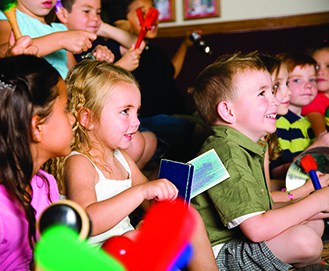We’ve discussed ways to get your little one involved in extracurricular activities and one of the ideas mentioned was playing an instrument. Playing an instrument can do a lot of good for your little one. There are a multitude of benefits such as the development of physical and social skills, patience and discipline and a boost in self-esteem.
Physical skills are improved, as certain instruments require movement to be played. Drums require coordinated arm and leg action while violins entail simultaneous movement from both hands. Instruments help develop ambidexterity as well an improvement in coordination.
Social skills can also be improved through music lessons. If it is a group music lesson, then teamwork and communication are required to play as said member of the group. Children need to understand their particular role in the larger ensemble to create music.
Patience and discipline also play a large role in learning to play an instrument. Discipline is used in habitual practice of the instrument. Patience is required, as one will not master an instrument immediately. Many instruments have a steep learning curve. For example, before an instrument can even be played, one has to know how to read music notes.
As a child learns to play an instrument, self-esteem is built. Constructive criticism and the slow progress of getting better will teach your child that hard work pays off.
At Minnieland Academy, children gather to create music, sing songs, clap and dance each day. Age appropriate musical instruments are available in our classrooms.
Continue reading “Why Music Lessons Might be Helpful for Child Development”




 nique lamp base out of them. If you have old character toys, you can use a lamp kit to convert them into a lamp stand. For example, your child’s favorite teddy bear may not be something they play with anymore, but displaying it as a light source is a fun way to keep it around for sentimental purposes.
nique lamp base out of them. If you have old character toys, you can use a lamp kit to convert them into a lamp stand. For example, your child’s favorite teddy bear may not be something they play with anymore, but displaying it as a light source is a fun way to keep it around for sentimental purposes.



